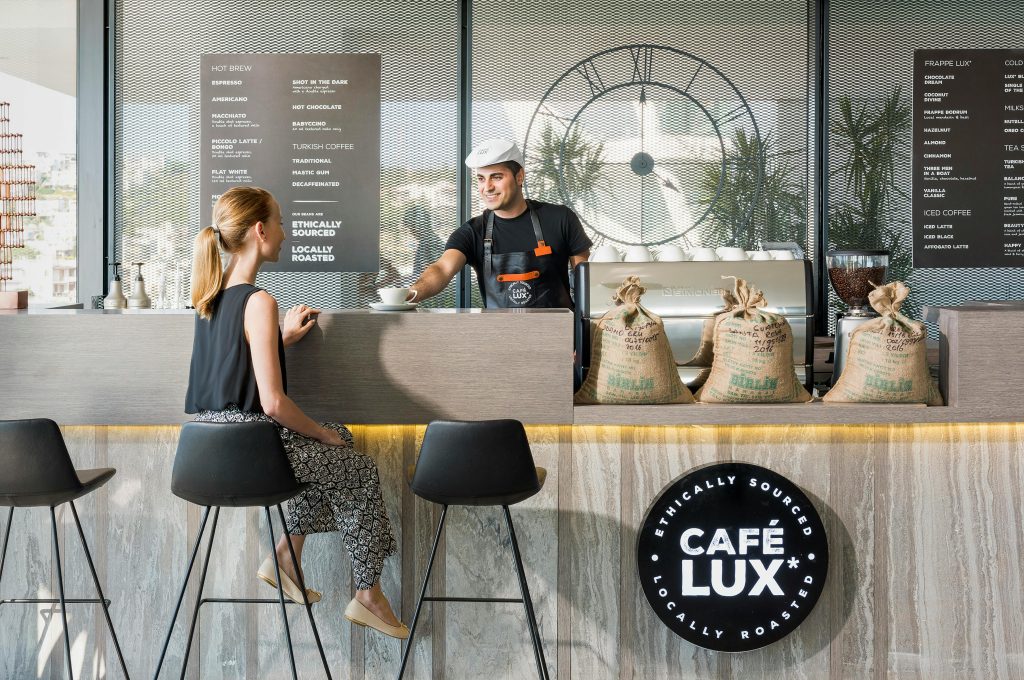If you’ve noticed, people are talking more to their devices now. Whether it’s Siri, Google Assistant, or Alexa, customers are using voice search to find places to eat, make reservations, and explore menus. In fact, over 50% of smartphone users use voice search at least once a day. This trend means it’s more important than ever to make sure your restaurant shows up when people search by voice.
In this guide, I’ll walk you through simple steps to optimize your restaurant for voice search. These are practical tips that can help your restaurant attract more customers and stay visible online.
Why is Voice Search Important for Your Restaurant?
Voice search isn’t just a fad; it’s quickly becoming a standard way of searching for information. In 2023, nearly 58% of people used voice search to find information about local businesses (Think with Google). More importantly, voice searches are often specific and action-driven. People are looking for “restaurants near me,” “best pizza in town,” or “where can I get vegan options?”
If you don’t optimize your restaurant for voice search, you’re missing out on potential customers who are ready to make a decision.
How to Optimize Your Business for Voice Search?
1. Claim and Optimize Your Google My Business Profile
One of the first steps for voice search optimization is setting up and optimizing your Google My Business (GMB) profile. When users ask Google for “restaurants near me,” your GMB profile helps your business show up in search results.
- Make sure all details are accurate: Include your restaurant’s address, phone number, hours, website, and category (e.g., Italian, Vegan).
- Add high-quality photos: This helps your restaurant look more appealing and trustworthy.
- Encourage reviews: Voice search often pulls information from reviews. The more positive reviews you have, the better!
2. Focus on Conversational Keywords
Voice search is different from traditional typing searches because people tend to ask full questions, not just keywords. Instead of typing “pizza place New York,” they might say, “Where can I find the best pizza in New York?”
To optimize your restaurant for voice search, try to include conversational keywords in your online content. For example, add phrases like “best burger in Penang,” “family-friendly restaurant,” or “where to find vegan options.” By using natural language, you increase the chances of your restaurant appearing in voice search results.
3. Update Your Website Content with FAQs
Voice searches often start with questions: “How late is [Restaurant Name] open?” or “Does [Restaurant Name] have outdoor seating?” Adding an FAQ section on your website can help your restaurant appear when people ask these common questions.
Some questions to consider in your FAQ section might be:
- What are your opening hours?
- Do you offer vegetarian or vegan options?
- Is there parking available?
- Do you offer delivery or takeaway?
Adding these questions and answers in simple, direct language can improve your chances of showing up in voice searches.
4. Use Local SEO Strategies
Local SEO plays a big role in voice search marketing. When someone searches for a restaurant nearby, search engines prioritize businesses that are optimized for local keywords.
Here’s how you can boost your local SEO:
- Include your location in key places: Add your city, neighborhood, or nearby landmarks in your website content. Use phrases like “authentic Nasi Lemak in Kuala Lumpur.”
- Get listed in local directories: Apart from Google, make sure your restaurant is listed in Yelp, TripAdvisor, and similar directories. These sites often pop up in voice search results.
- Earn local backlinks: Collaborate with local bloggers, influencers, or news sites to get featured. These links signal to search engines that your business is reputable in your area.
5. Optimize for Mobile Users
Many people use voice search on mobile devices. This makes it crucial for your website to be mobile-friendly. A report from Statista shows that 60% of all Google searches come from mobile devices.
To optimize your site for mobile:
- Make sure your site loads quickly: A slow website can lead to a poor user experience, and users may move on to other options.
- Use responsive design: Your site should adapt to any screen size, whether it’s a smartphone, tablet, or desktop.
- Simplify navigation: People want quick answers, so make it easy to find information like your menu, location, and contact info on mobile.
6. Write Content That Answers “Near Me” Questions
Many voice searches include phrases like “near me,” especially when people are searching for a restaurant nearby. To improve your chances of showing up in these searches, make sure you include “near me” phrases in your content. This can be in your GMB profile, your website, or even blog posts.
For instance, you could write blog posts like “Top Dishes to Try Near Me” or “Best Places for Brunch Near [City].” This helps Google understand that you’re relevant for users in your area.
7. Keep Your Menu Updated Online
An up-to-date menu is essential for voice search optimization. Many customers use voice search to find specific items, like “gluten-free options” or “vegan pizza near me.” Make sure your menu is updated across all online platforms, from your website to your GMB profile to social media. Include keywords that describe your food items in detail, as these descriptions help Google understand what you offer.
8. Make Your Content Scannable and Easy to Read
Voice search engines look for content that’s easy to understand. Avoid big blocks of text and use short sentences and paragraphs. Break up content with headers, lists, and bullet points to make it scannable.
For example, if you’re writing a description of your restaurant, keep it simple:
- “Located in the heart of KL, we offer a cozy dining experience with local ingredients and a mix of traditional and modern flavors.”
- “We serve breakfast, lunch, and dinner with vegan, gluten-free, and kid-friendly options.”
By keeping your content simple, you’re making it easier for search engines to pull relevant information.
9. Use Structured Data (Schema Markup)
Schema markup is a type of code you add to your website to help search engines understand your content better. Adding restaurant-specific schema markup can make it easier for search engines to pull up important details about your business, like hours, menu, price range, and location.
For example, if someone says, “Find Italian restaurants open now,” schema markup helps Google know if your restaurant is a match.
Adding schema might sound complicated, but many website platforms and plugins can help you set it up. The extra effort can give your website a big advantage in voice search rankings.
10. Monitor and Adapt Your Voice Search Strategy
Voice search technology is always evolving, so it’s essential to keep track of your search rankings and customer queries. Use tools like Google Analytics or other SEO tools to monitor how people find your website. Pay attention to what customers are asking, both in reviews and online, and adjust your keywords or FAQ section as needed.
FAQs
What is the Use of Voice Search in Marketing?
Voice search marketing isn’t just about showing up in search results; it’s about connecting with customers where they are. Since voice searches are often made by people who are ready to make a quick decision, your restaurant can be right there when they need it. According to research, 76% of smart speaker users perform local searches at least once a week (BrightLocal).
What is an example of Voice Search Optimization?
To recap, here are examples of voice search optimization that can help your restaurant attract more customers:
- Update and optimize your Google My Business profile.
- Add conversational keywords to your website content.
- Include an FAQ section on your site with common questions about your restaurant.
- Add “near me” and local terms to ensure you’re visible to nearby customers.
By following these tips, you’ll improve your restaurant’s chances of appearing in voice search results and create a better experience for potential customers. Voice search optimization is a great tool for keeping your restaurant ahead in today’s digital age.




